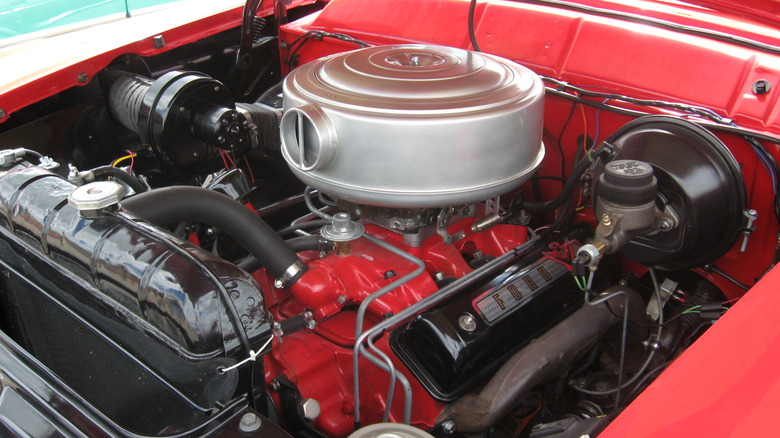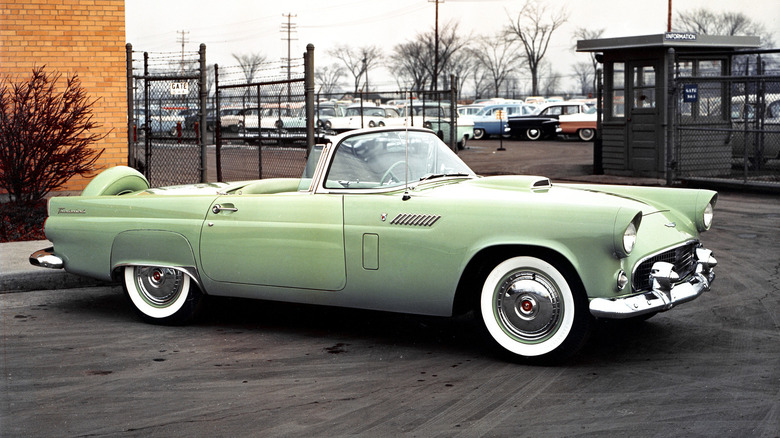Why Ford's 1954 V8 Engine Was Called A Y-Block
When the Y-Block V8 debuted in 1954, it boasted a long list of improvements over its predecessor. It was not only more powerful than Ford's previous Flathead V8, but was also significantly more rigid. This extra stiffness was partly thanks to the engine's deep skirting, which would also give the Y-Block its name. Rather than looking like a traditional "V" when viewed from the front, the skirting made the engine look closer to a "Y." Keen to find a way to distinguish this all-new V8 design from its older engines, Ford used the "Y-Block" name in its early promotional material, and the label stuck. Lincoln also offered a similar-looking engine starting in 1952, but the two are not related.
By ushering in the Y-Block for the 1954 model year, Ford became the first of the affordable American brands to offer an overhead-valve V8. Chevrolet followed suit the following year, launching its first-generation small-block V8. While Chevy's engine proved to be a game-changer, powering more cars than any other in history, Ford's Y-Block engine was not as successful.
It survived as an entry-level V8 in certain Ford and Mercury cars until 1962, and in Ford's light trucks until 1964. Then, after a decade of production, it was discontinued in the U.S. without fanfare, although it reportedly remained in production in Argentina until the '80s. Despite the Y-Block being innovative at the time of its launch, it suffered from several shortcomings that limited its potential compared to its rivals.
The Y-Block's shortcomings
At its introduction, the Y-Block offered a significant performance improvement over the outgoing Flathead V8. The 1954 Y-Block offered 20 hp more than the previous year's Flathead, with 130 hp on offer. Initially, the Y-Block had a 239-CI displacement, but it would later grow significantly in size and power. In competition, the Y-Block would deliver two NASCAR manufacturers' championships for Ford, as well as a Pike' Peak crown. It had plenty of performance potential in the right hands, but some design oddities stopped it from becoming a go-to performance engine among tuners.
The most notable of those oddities was that it had horizontal intake ports, arranged in an over-and-under layout. That, and its mushroom-shaped lifters, made the Y-Block trickier for custom engine builders to work on than other V8 engines of the era. Another issue was that the Y-Block quickly became known for oil starvation issues, with a tendency for certain oil passages to clog if the engine wasn't carefully maintained.
Ford realized that an all-new design was the best way to remedy the Y-Block's issues and so introduced the FE V8 engine in 1958. The FE proved to be hugely successful both on the road and on track, remaining in production until well into the 1970s. Ford ditched the Y-Block branding for the FE, but it still featured the same deep skirting that gave the 1954 V8 engine its name.

